Why We Cry, and What Happens to Our Body When We Do
Almost every person has cried at least once in their lifetime. We tend to shed a tear over sad movies, when we feel shame, or even in happiness. The human body reacts to many irritants with tears. But these are different types of tears.
5-Minute Crafts would like to tell you about why we cry.
The reasons why we cry
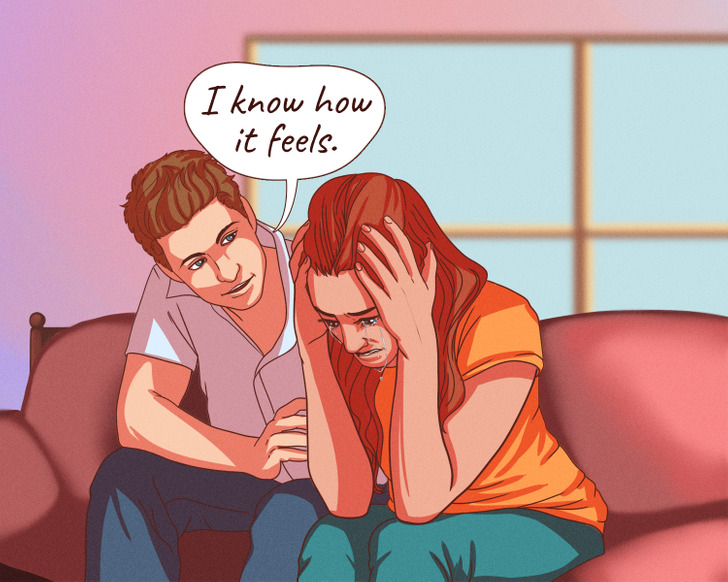
- Emotional reasons: We cry to feel relieved. Tears help release tension and they give our minds some relief. Many people feel better after crying.
- Social reasons: We cry to convey emotions. Crying helps us let others know how we feel right now. Tears can communicate hatred, anger, joy, sincerity, love, etc.
- Physical reasons: We cry to deliver essential substances to our eyes or wash out toxins. Oxygen and nutrients reach the surface of the eyes through tears because there are no blood vessels in the eyes.
Types and functions of tears
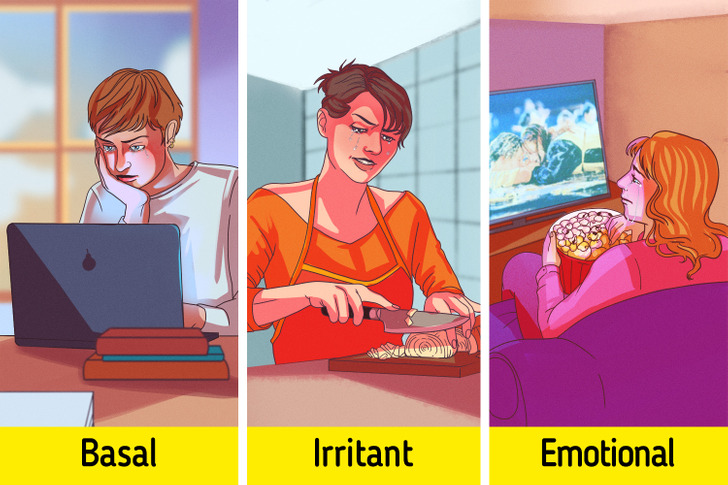
There are 3 types of tears, and each of them has different functions.
- Basal tears coat our eyes all day. They help us see better, they moisturize, protect, fight infections, and also create a protective barrier against various debris. Basal tears deliver oxygen and nutrients to the surface of the eye. They contain oil, mucus, water, and salt. The oil prevents them from evaporating. Blinking helps us distribute basal tears evenly across the surface of the eye.
- Irritant tears are needed to wash the eyes out. They are released when you peel onions or get something into your eye. These tears flush out irritants to protect your eyes.
- Emotional tears appear as a reaction to strong emotions, such as sadness, grief, anger, or, conversely, joy. They contain more stress hormones and natural painkillers than other types of tears. Emotional tears convey our emotions to those around us.
What tears are made of
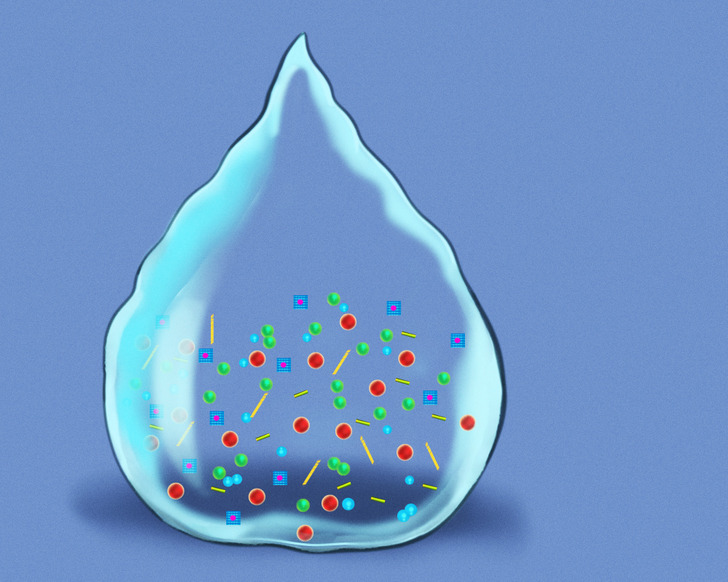
Many people wonder why tears are salty. The fact is, body fluids contain electrolytes, which give them a salty taste.
Components of tears:
- Water
- Electrolytes (sodium, potassium, chloride, bicarbonate, magnesium, and calcium)
- Proteins (lysozyme, lactoferrin, lipocalin, and IgA) — tears contain about 1/10 of the blood plasma protein.
- Lipids
- Mucins
Tears contain natural antibiotics, lysozymes. They help keep the surface of the eyes healthy by fighting bacteria and viruses.
Tear film consists of 3 layers:
- The oily outer layer makes the surface of the eye smooth and prevents tears from drying out quickly.
- The watery middle layer nourishes and moisturizes the eye.
- The inner mucus layer helps the tear film stick to the surface of the eye.
What happens when we cry
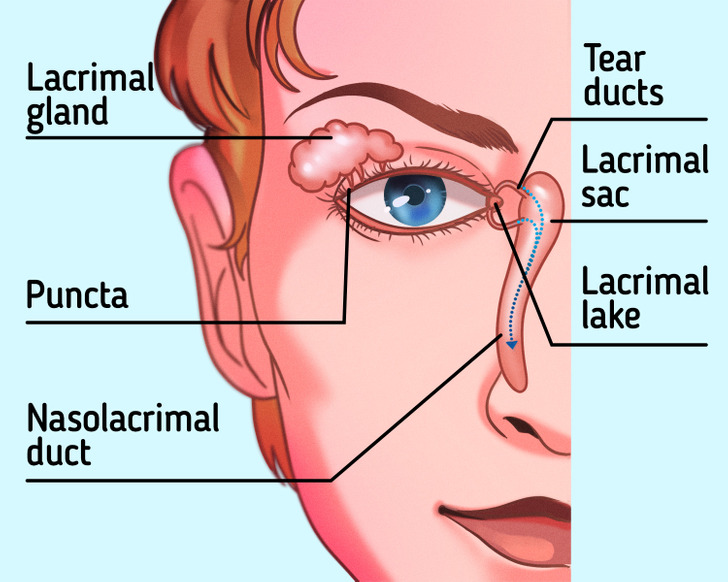
- The lacrimal glands located above the eyes are responsible for the production of tears. They produce tears from blood plasma.
- After secretion, tear fluid circulates across the eye and accumulates in the lacrimal lake, located in the medial canthus of the eye (the inner corner).
- From there, tears flow into openings (puncta) on the inside corners of the upper and lower eyelids.
- Through the puncta, tears enter the canals where they move to the lacrimal sac.
- Next, tears pass through the nasolacrimal duct and drain into the nose.
- There, tears either evaporate or are reabsorbed.
Various infections, swelling, trauma, or tumors can cause a blocked tear duct. Sometimes babies are born with a blocked tear duct. But usually, this condition goes away on its own.
Emotional and irritant tears can be produced in large quantities. They overwhelm the lacrimal drainage system and flow out of the eyes.
With age, the production of basal tears slows down, which can lead to the development of dry eye.
Why men rarely cry
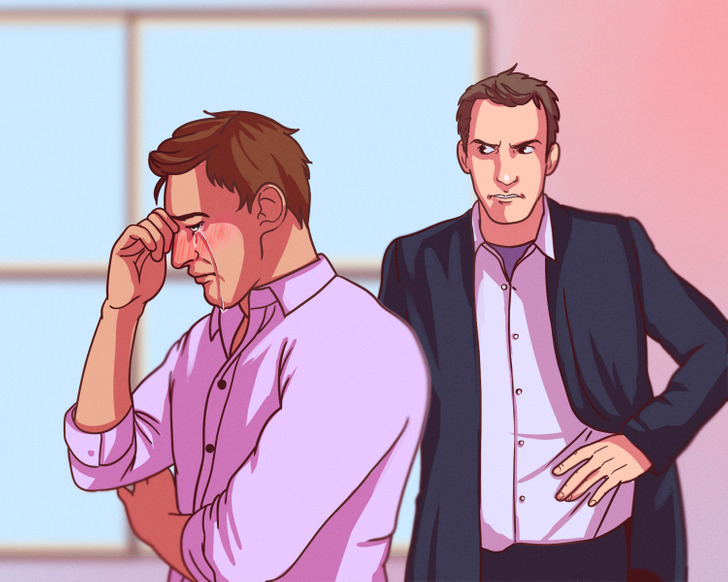
If crying is good for your health
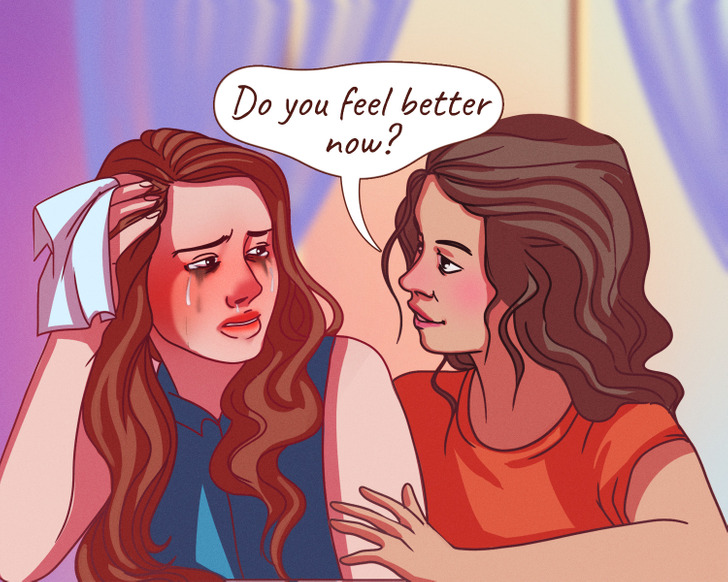
Tears are believed to help us relieve stress and emotional pain. According to experts, keeping difficult feelings inside can be bad for your health. So crying helps you to get rid of negative emotions. Additionally, crying next to people who are close to you can help you become even closer.
Stress creates tension, and when you cry, you release some of that tension. Tears also activate the parasympathetic nervous system and restore the state of balance in the body.